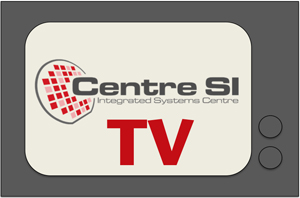Go to
July 8, 2011
Brain to brain communication, memristors... the rise of intelligent machines?
Robert Sobot, Electrical and Computer Engineering, University of Western Ontario, London, ON, Canada
Abstract: At the beginning of the 21st century, we are heading into a new technological revolution. This time, convergence of nanotechnologies and neuroscience is set to lead the next wave of technology, which is expected to influence our lives more than any of the previous ones. As it already has happened several times throughout the history, the new technology is enabling a quantum leap in our scientific advance.
A full century was needed for all important bits and pieces required for the information technology to come together. In this talk some of the most important technological milestones in the microchip development are summarized. Looking ahead, the current research opportunities in the field of neuroscience, more specifically biochip and brain to machine interface, are reviewed in respect to nanotechnology. Direct brain to brain communication seems to be out of the science fiction domain, but with memristors entering the scene the only questions remaining are: are we there yet and where are we heading?
 About the speaker: Robert Sobot (M’96,) received the B.Sc. degree in engineering physics from the University of Belgrade (former Yugoslavia) in 1989, and the M.A.Sc. and Ph.D. degrees in electrical engineering from Simon Fraser University, Burnaby, Canada, in 1996 and 2005 respectively.
About the speaker: Robert Sobot (M’96,) received the B.Sc. degree in engineering physics from the University of Belgrade (former Yugoslavia) in 1989, and the M.A.Sc. and Ph.D. degrees in electrical engineering from Simon Fraser University, Burnaby, Canada, in 1996 and 2005 respectively.
From 1996 to 2001 he was with PMC-Sierra Inc, Burnaby, developing CMOS mixed-signal integrated circuits for digital communications as a Team Leader. While with PMC-Sierra Inc., he was responsible for development of mixed-signal circuits such as phase-locked loops (PLL) and analog adaptive equalizers. Since 2006, he is with the University of Western Ontario, London ON, Canada as an Assistant Professor. His current research interests include implantable analog integrated circuits, high-speed analog circuits in BiCMOS, wireless communication circuits, behavioral modeling, and software-defined radio. He holds one patent and has published a number of papers.
Secondary navigation
- January 29, 2018
- August 30, 2017
- Past seminars
- 2016 - 2017 Seminars
- 2015 - 2016 Seminars
- 2014 - 2015 Seminars
- 2013 - 2014 Seminars
- 2012 - 2013 Seminars
- 2011 - 2012 Seminars
- 2010 - 2011 Seminars
- 2009 - 2010 Seminars
- 2008 - 2009 Seminars
- 2007 - 2008 Seminars
- 2006 - 2007 Seminars
- August 31, 2007
- June 29, 2007
- June 20, 2007
- June 5, 2007
- May 30, 2007
- May 16, 2007
- May 15, 2007
- April 24, 2007
- March 27, 2007
- March 14, 2007
- February 9, 2007
- February 8, 2007
- January 12, 2007
- December 5, 2006
- November 14, 2006
- October 31, 2006
- October 27, 2006
- October 26, 2006
- October 20, 2006
- September 20, 2006
- September 20, 2006
- September 20, 2006
- September 19, 2006
- 2005 - 2006 Seminars
- August 23, 2006
- August 22, 2006
- June 26, 2006
- June 20, 2006
- June 16, 2006
- June 7, 2006
- June 6, 2006
- May 30, 2006
- May 17, 2006
- May 10, 2006
- April 27, 2006
- April 12, 2006
- March 31, 2006
- March 29, 2006
- March 22, 2006
- March 15, 2006
- February 27, 2006
- February 8, 2006
- January 25, 2006
- January 19, 2006
- January 18, 2006
- January 17, 2006
- January 11, 2006
- November 30, 2005
- November 23, 2005
- November 2, 2005
- October 26, 2005
- October 25, 2005
- October 5, 2005
- September 28, 2005
- 2005 Seminars

